Tire valves
Wheel tire valves are used to fill the tire with air (with the aid of a tire pump), and of course keeping the air in the tire.
Tire valves allow air to be filled into the tire and then holding it there.
The tire valves mount through the rim and the size/hole in the rim is pretty much standard. Here's two photos of tire valves mounted in a wheel.
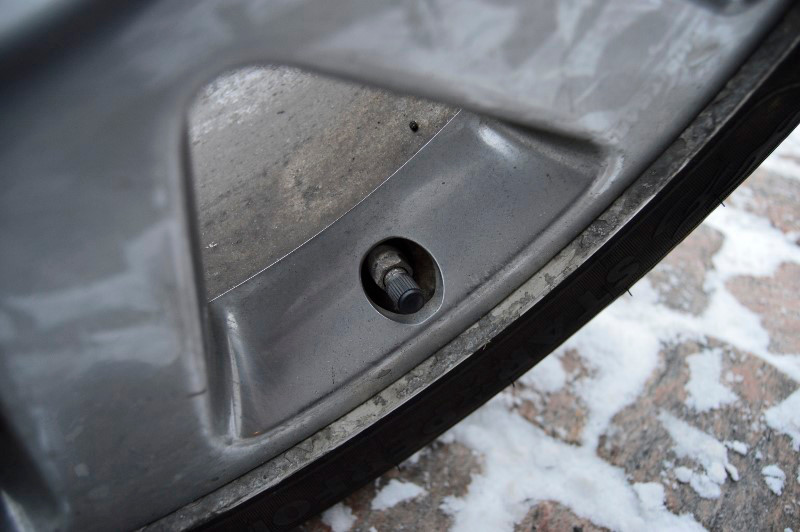 Tire valve mounted in wheel.
Tire valve mounted in wheel.
Second image, sorry for the blurry effect.
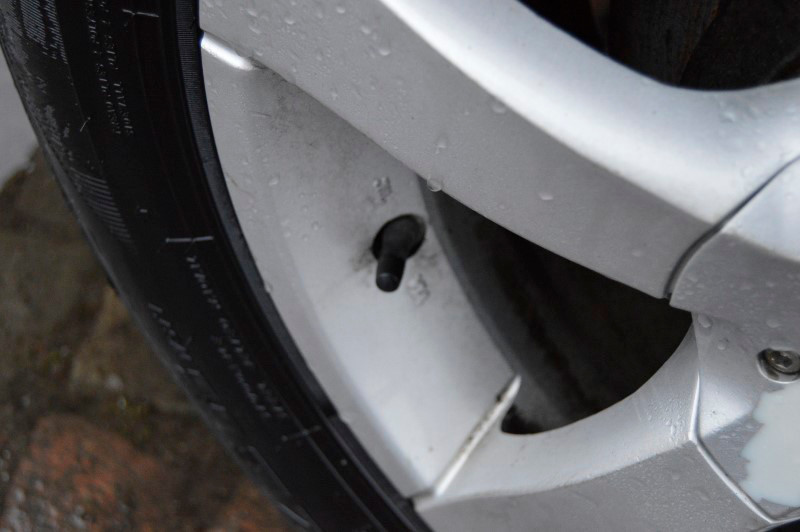 Tire valve mounted in wheel.
Tire valve mounted in wheel.
Here is how the tire valves looks like unmounted. As you may see they doesn't need any bolts or nuts to keep them in place, because of their shape and the obvious reason that the tire pressure from the inside holds them in check.
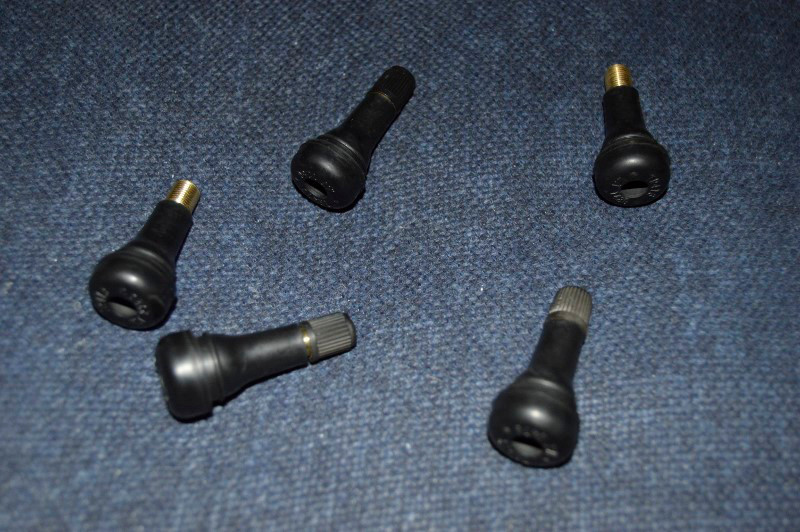 Tire valves as seen unmounted.
Tire valves as seen unmounted.
Often, when a tire looses air pressure, a leaking tire valve is the problem, as rubber (which they're partly made of) becomes worn out through time, especially if you aren't careful when filling the tire with air and the valve bends and such. Note that a tire valve can only be replaced when the tire is unmounted from the rim.
Notice about TPMS! Newer vehicles are often (whether how new it is, it may be mandatory from the car fabric!) equipped with a Tire Pressure Monitoring System, TPMS, which monitors the tire pressure of the wheels. In order to do this, the tire valves have a tire pressure sensor built into the valve, on the inside of the tire (for it to be able to measure the pressure). On some wheels, these sensors mount in the same way as standard valves, but on other wheels they may consist of two separate parts which bolts to each other (made of metal / aluminum), mounting them to the rim.
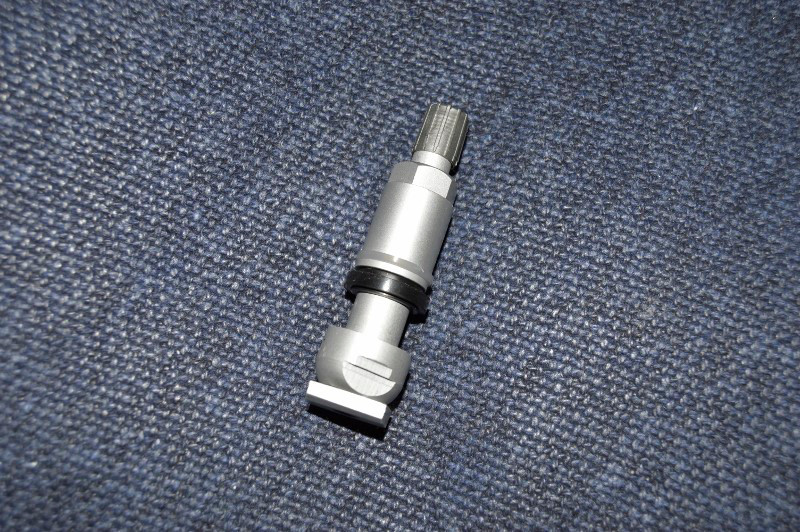 TPMS valve base in aluminum, without the sensor though - Screw on type valve by the way, as mentioned above!
TPMS valve base in aluminum, without the sensor though - Screw on type valve by the way, as mentioned above!
Valve caps
This subject doesn't need any super extended description, as the name says it all (valve caps are caps/covers for the tire valves, so dirt and debrise doesn't get into the valve), but there are some things to think about, especially since it has become a lot more common with custom valve caps.
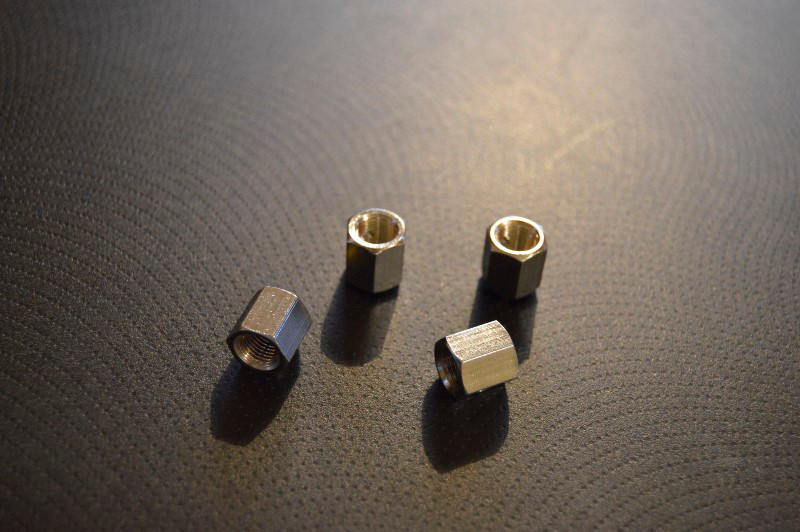 Tire valve caps in metal.
Tire valve caps in metal.
Custom valve caps, those that aren't in plastic (the ones we usually see) are often made of steel/aluminum. Those valve caps comes in many different designs, which is awesome if we look to the appearance/style, but watch out though, as metal valve caps may corrode with the metal thread on the tire valve, making it almost impossible to loosen them without breaking the whole valve! If you are mounting some nice looking caps, make sure to put some grease on the threads (and loosen them once in a while), or better yet only buy valve caps which have a plastic insert, making the threads in plastic but the exterior in metal.
There are also valve caps with a locking nut integrated, which often uses a allen key. Locking valve caps are good if you want to make it harder for someone to steel them or loosen them and let the air pressure out via the valve.
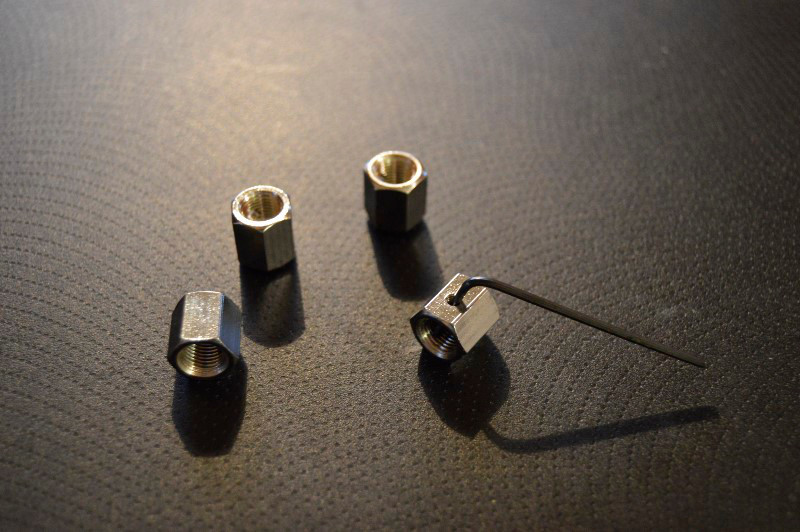 Tire valve caps locking type.
Tire valve caps locking type.
So, next time you buy some metal valve caps, don't forget to grease the threads (or buy some with plastic), or else you might have to replace all of the four caps if they get stuck to the valves! Had it happen to me when I forgot about this important detail, all of the four caps got stuck, felt like they were welded on!
Det var allt för denna gången, kör försiktigt! ..now you know how to say "That's all for this time, drive safe!" in swedish.
See you in the next blog post!
